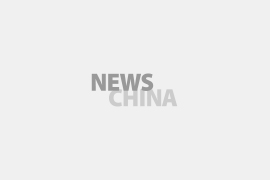n December 11 and 12, the Central Economic Work Conference was held in Beijing. Chaired by General Secretary of the CPC Central Committee Xi Jinping, the annual meeting serves to outline the main economic objectives and policy plans for the year ahead.
China set a GDP growth target of around 5 percent for 2024. In the first three quarters of the year, China’s GDP expanded by 4.8 percent year-on-year. The meeting expressed confidence in reaching all major economic and social development targets for this year, while recognizing that the country’s economy faces numerous difficulties and challenges, both domestically and internationally.
On the global front, major economies are entering monetary easing cycles, while trade protectionism, unilateralism and geopolitical conflicts are increasing. Domestically, China’s economy is undergoing structural adjustments and a transformation that has led to shrinking demand and weakened market expectations.
According to the conference, China’s central economic task in 2025 is to maintain “stable” economic growth, ensure “stable” employment and “reasonable rebound” of price levels.
The conference identified the need to “vigorously boost consumption, enhance investment efficiency, and expand domestic demand comprehensively” as the first key policy tasks, and called for a special action plan to implement it. It said there are plans to increase pensions and the subsidy for health insurance, which could gradually help underpin household confidence and unleash consumption potential, particularly for low- and middle-income groups, in the long run.
The conference makes clear that China will undertake a “more proactive” fiscal policy and a “moderately loose” monetary policy. This marks a significant shift, as for about 14 years, China has adopted “active” fiscal policies and “prudent” monetary policies. The meeting suggests that China will increase the deficit-to-GDP ratio, reduce the reserve requirement ratio (the amount banks need to keep in reserve with the central bank), and lower interest rates when necessary. Moreover, China will issue more ultra-long-term special treasury bonds and local government special-purpose bonds in 2025.
These measures are in line with the Political Bureau of the CPC Central Committee meeting held on December 9, which said that China will “enrich and improve the policy toolkit, strengthen unconventional counter-cyclical adjustment, intensify the coordination of various policies and make macro regulation more forward-looking, targeted and effective.” China is therefore expected to launch more stimulus measures in 2025.
The conference continued to emphasize stabilizing the housing market as the focus of risk prevention, and pledged to push forward urban village renovation, better manage new land supply and make more progress on selling existing housing.
Another major risk comes from smaller local financial institutions.
Efforts will be made to stabilize foreign trade and investment. China will push forward institutional openness through free trade zones and expand pilot programs to open up the telecom, healthcare and education sectors. The services, green and digital trades will also be promoted.
Better coordination of economic policies and where economic and social policies intersect is stressed to improve the efficiency of policy implementation.
While specific growth targets and policy measures will only be fully revealed at the National People’s Congress sessions normally set for March 2025, these two meetings demonstrate China’s proactive stance in navigating the recovery momentum of the economy.

 Old Version
Old Version